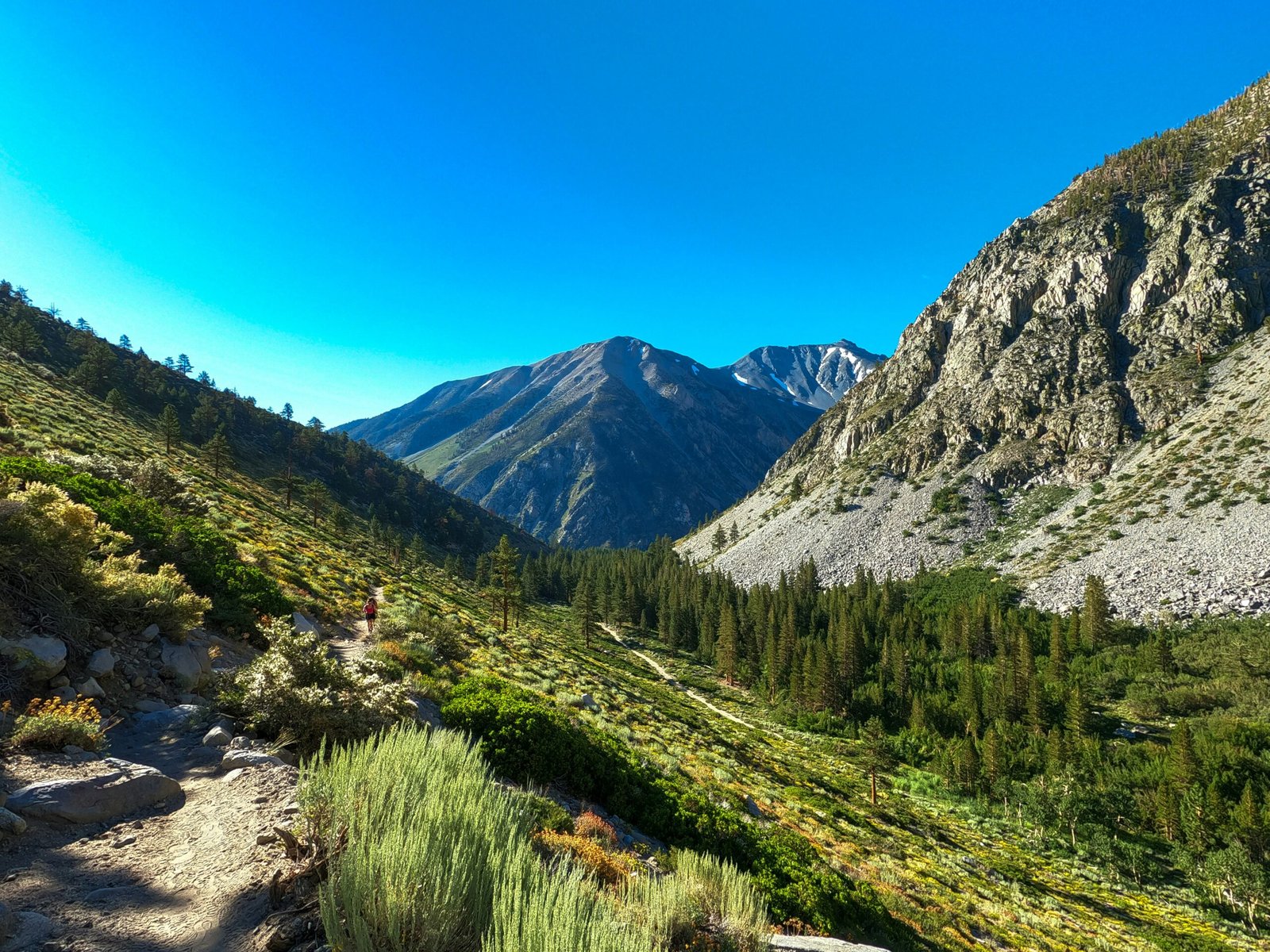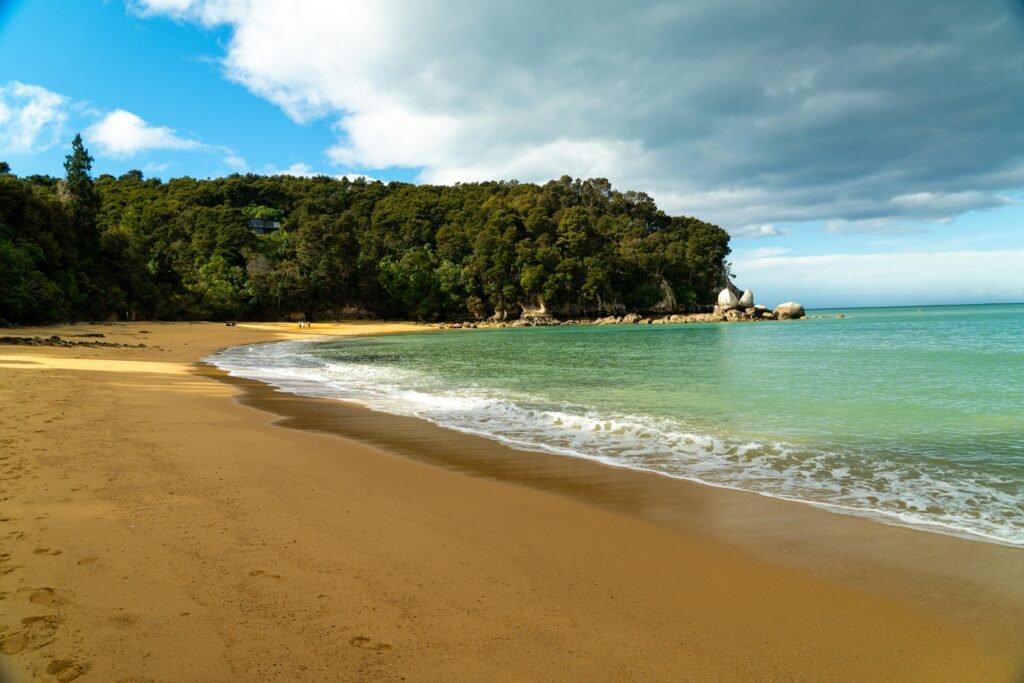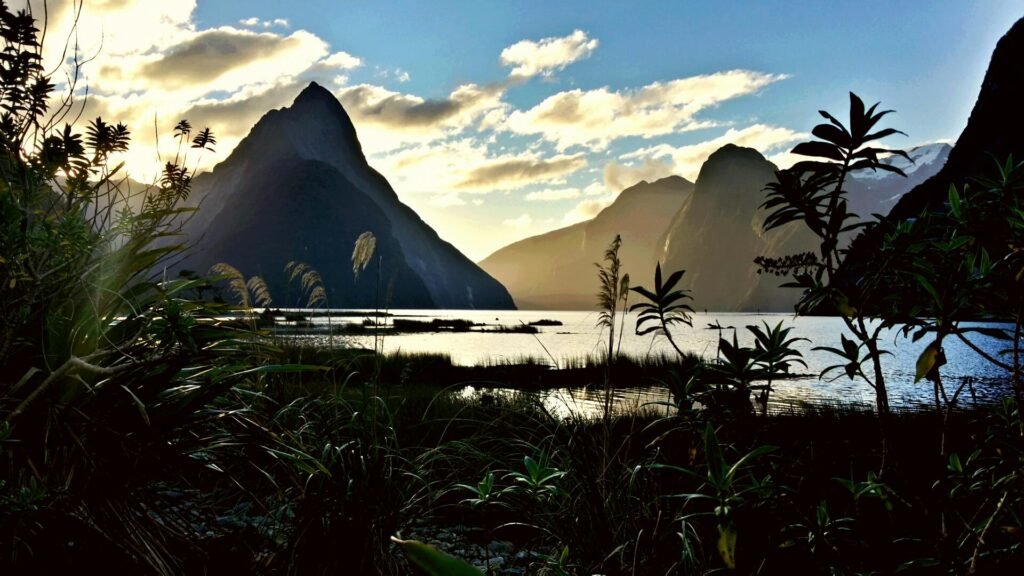Introduction to New Zealand’s National Parks
New Zealand is renowned for its stunning natural beauty, characterized by diverse landscapes that range from towering mountains and lush forests to picturesque coastlines and serene lakes. The significance of national parks in New Zealand cannot be overstated, as they play a vital role in conserving the country’s unique ecosystems and biodiversity. With a total of 14 national parks, New Zealand provides a sanctuary for an array of native wildlife, some of which cannot be found anywhere else in the world.

The establishment of these parks has been critical not only for the preservation of indigenous flora and fauna but also for the promotion of ecological balance. Each park showcases distinct geographical features and habitats, making them vital for research and education about New Zealand’s natural heritage. The majestic Fiordland National Park, for instance, highlights spectacular fjords and rugged cliffs, while Abel Tasman National Park boasts golden beaches and coastal trails. These contrasts offer opportunities for varied recreational activities, thereby enhancing the experience of visitors and locals alike.
Moreover, national parks in New Zealand serve as a testament to the nation’s commitment to conservation and sustainable tourism. The Department of Conservation (DOC) actively manages these protected areas to ensure that the natural environment remains intact for future generations to enjoy. This commitment to conservation not only safeguards habitats but also engages the community in conservation efforts, fostering a deeper understanding and appreciation of the unique natural treasures that New Zealand has to offer.
As we delve into the specific national parks that define the landscape of New Zealand, it becomes evident that these protected areas are not merely scenic locations; they are vital components of the country’s identity and heritage. Their preservation is essential for maintaining the ecological integrity and intrinsic beauty of New Zealand’s wild nature.
Tongariro National Park: A Geothermal Wonderland
Tongariro National Park, established in 1887, holds the distinction of being New Zealand’s oldest national park and a UNESCO World Heritage site. This remarkable park showcases a unique mix of volcanic landscapes, including active volcanoes, lush forests, and alpine meadows, attracting nature enthusiasts and adventure seekers alike. One of the most celebrated features of the park is the Tongariro Alpine Crossing, which is often heralded as one of the best one-day hikes in the world. Spanning approximately 19.4 kilometers, this trek takes visitors through an array of stunning geological formations, emerald lakes, and expansive volcanic craters.

The diverse terrain of the Tongariro Alpine Crossing provides hikers with breathtaking views of Mount Ngauruhoe and Mount Tongariro, the park’s prominent peaks. The ever-changing weather and geothermal activity in the area create a mystical atmosphere that leaves a lasting impression. Whether traversing the sulfuric vents, glacial streams, or vibrant mineral deposits, hikers experience the raw power of nature firsthand. For those looking to immerse themselves deeply in the park’s natural beauty, several shorter trails and scenic viewpoints cater to varying skill levels.
Aside from its natural beauty, Tongariro National Park is steeped in cultural significance for the Māori people, who regard the mountains as taonga (treasures) imbued with spiritual meaning. The park is not only a site of natural wonder but also a place of cultural value, where visitors can learn about Māori legends and traditions associated with the land. Numerous guided tours and cultural experiences emphasize this connection, providing a deeper understanding of the heritage woven into the landscape.
In addition to hiking and cultural encounters, Tongariro National Park offers opportunities for skiing and snowboarding in winter months, making it a year-round destination. Wildlife enthusiasts can also spot a variety of native bird species, further enhancing the park’s appeal. Overall, Tongariro National Park stands as a testament to New Zealand’s natural heritage and rich cultural tapestry, inviting all who visit to appreciate its geothermal wonder and historical significance.
Abel Tasman National Park: Coastal Paradise
Abel Tasman National Park, located at the northern end of New Zealand’s South Island, is celebrated for its enchanting coastal scenery and golden sandy beaches. This pristine park, established in 1942, covers approximately 22,530 hectares and offers a variety of landscapes including lush native forests, secluded bays, and vibrant marine environments. The park attracts numerous visitors seeking relaxation, adventure, and a chance to immerse themselves in New Zealand’s unique wildlife.

One of the most prominent features of Abel Tasman National Park is the Abel Tasman Coastal Track. Stretching for 60 kilometers, this iconic walking track meanders along the coastline, providing breathtaking views of turquoise waters and pristine beaches. Hikers can explore diverse environments, from coastal forests to sandstone cliffs, while enjoying the sounds of native bird species that inhabit the area, such as the fat, cheerful bellbird and the agile fantail. Whether one chooses to hike the entire track or only specific sections, the experience promises unparalleled beauty and tranquility.
In addition to walking, Abel Tasman offers excellent opportunities for kayaking enthusiasts. The calm waters of the park make it an ideal setting for paddling, allowing visitors to explore hidden coves and islands up close. During kayaking excursions, individuals may encounter an array of marine life, including seals basking on rocks, dolphins playing in the surf, and even the occasional sighting of whales. These experiences emphasize the park’s commitment to conservation and sustainable tourism, ensuring that future generations can continue to appreciate its remarkable environment.
With its combination of walking tracks, kayaking adventures, and vibrant marine life, Abel Tasman National Park stands as a beloved destination for nature enthusiasts in New Zealand. A true coastal paradise, the park not only showcases the natural beauty of the region but also highlights the importance of protecting these precious ecosystems for years to come.
Fiordland National Park: Majestic Fjords and Waterfalls
Fiordland National Park, located in the southwestern corner of New Zealand’s South Island, is renowned for its stunning natural beauty, characterized by dramatic fjords, cascading waterfalls, and verdant rainforests. This UNESCO World Heritage site covers over 1.2 million acres and is part of the Te Wahipounamu World Heritage area, reflecting its ecological significance and pristine landscapes. Among its most visited attractions are Milford Sound and Doubtful Sound, both recognized for their breathtaking scenery and rich biodiversity.

Milford Sound, often hailed as the park’s crown jewel, is flanked by towering cliffs and peaks, including the iconic Mitre Peak. Visitors can experience this majestic fjord through a variety of means. Boat tours, which are among the most popular options, provide tourists with a close-up view of the dramatic waterfalls, such as the powerful Stirling Falls and the picturesque Bowen Falls. These tours often include opportunities to observe marine life, including dolphins and seals, which add to the enchanting experience of navigating through the fjord’s striking landscape.
On the other hand, Doubtful Sound, accessible only by boat or through a longer hiking trail, offers a more secluded alternative to Milford Sound. Known for its serenity and less commercialized atmosphere, Doubtful Sound provides a perfect backdrop for kayak excursions and guided hikes. The park’s lush rainforests are home to diverse flora and fauna, including the rare yellow-eyed penguin and the endangered rock wren, making it an important area for conservation efforts.
Visitors seeking an adventurous experience can explore the extensive network of hiking trails, such as the renowned Routeburn Track and Kepler Track. These trails not only offer spectacular views of the fjords but also allow guests to immerse themselves in the park’s rich natural heritage. Fiordland National Park serves as a quintessential example of New Zealand’s wild nature, offering unforgettable experiences amidst its majestic fjords and waterfalls.
Useful Tips for Visiting National Parks
Visiting New Zealand’s national parks is a remarkable experience, where stunning landscapes and unique ecosystems await. To ensure a safe and enjoyable trip, several practical tips should be considered. First, transportation options vary; while some parks can be reached via public transport, others may require a rental vehicle for accessibility. It is advisable to research the specific park’s transport options ahead of time to plan your travel effectively.
The timing of your visit is also crucial. New Zealand’s weather can be unpredictable, so it is generally recommended to visit during the summer months, from December to February, when the conditions are most favorable for hiking and outdoor activities. However, each park has its peak season, and understanding when to visit can help avoid crowds and fully appreciate the natural beauty.
Permits may be required for certain activities, such as overnight camping or accessing specific trails. It is important to check the official Department of Conservation website beforehand to stay informed on regulations and to ensure compliance with conservation guidelines. Acquiring the necessary permits in advance can also streamline your visit.
When packing for your adventure, consider the specific demands of hiking in varying terrains. Essential items must include sturdy footwear, layered clothing, a reusable water bottle, and sunscreen. It is wise to pack a first-aid kit and portable snacks for longer treks. Additionally, all visitors should make it a priority to respect the delicate ecosystems within the parks. Staying on marked trails, avoiding feeding wildlife, and disposing of waste properly are essential practices that help maintain the parks’ natural integrity.
By adhering to these practical tips, visitors can contribute to the preservation of New Zealand’s breathtaking landscapes while enjoying the myriad of experiences its national parks offer.
Wildlife Encounters: A Flora and Fauna Paradise
New Zealand’s national parks offer an unparalleled opportunity to witness a diverse range of wildlife in their natural habitat. The country is renowned for its unique fauna, with many species found nowhere else in the world. Among the most iconic is the Kiwi, a flightless bird and a national symbol, easily distinguished by its long beak and brown, fuzzy feathers. Observing a Kiwi in its natural habitat is a highlight for many visitors, as these nocturnal birds are often elusive and shy.
Alongside the Kiwi, one can encounter the Tuatara, a reptile that has existed for over 200 million years. This fascinating creature is often referred to as a “living fossil,” and seeing one in places like the Department of Conservation reserves is a remarkable experience. Tuataras play a crucial role in New Zealand’s ecosystem, and their conservation is vital as they face threats from habitat loss and introduced predators.
The flora of New Zealand’s national parks is equally exceptional, with many native plant species contributing to the unique biodiversity. The lush forests are home to towering Kauri trees and exotic ferns, which provide essential habitats for various animal species. Visitors to the parks are encouraged to engage in responsible wildlife viewing practices, which includes respecting the animals’ space and minimizing disturbances to their habitats. Conservation efforts are vital in ensuring the continuation of New Zealand’s remarkable wildlife, and parks serve as protected areas where these species can thrive.
By promoting awareness and understanding of wildlife conservation, visitors can play an instrumental role in preserving the natural environment of New Zealand’s national parks. This sense of responsibility not only enhances the visitor experience but also ensures that generations to come will have the opportunity to witness the extraordinary flora and fauna that define this unique landscape.
Adventure Activities: More Than Just Hiking
New Zealand’s national parks are widely renowned for their stunning landscapes and diverse ecosystems; however, they offer an array of adventure activities that cater to both thrill-seekers and families. While hiking remains a cornerstone of exploring these parks, visitors can engage in a multitude of other exhilarating pursuits, making each visit a truly holistic experience with nature.
Mountain biking is a popular choice for those looking to traverse challenging terrains, with the Queenstown Bike Park being a premier destination. The park provides trails suitable for all skill levels, from beginners navigating gentle slopes to seasoned bikers tackling steep descents. This activity not only promises adrenaline-pumping rides but also showcases the breathtaking vistas that New Zealand’s national parks have to offer.
Another in-demand adventure activity within these parks is kayaking. The Abel Tasman National Park is a prime location for this pursuit, where visitors can paddle through crystal-clear waters framed by lush vegetation and dramatic coastlines. Guided kayaking tours often include wildlife spotting opportunities, such as sea lions and various bird species, enhancing the experience with a closer connection to nature.
For those seeking vertical thrills, rock climbing is an exceptional possibility, particularly in places like the Mt. Aspiring National Park. Here, both novice and expert climbers can find routes that challenge their skills while surrounded by majestic mountains. Additionally, rock climbing lessons are usually available for beginners, making this adventure accessible to everyone.
Guided tours provide another layer of immersion in these spectacular environments. Whether it’s a scenic helicopter ride over the Fiordland National Park or a boat tour through the pristine waterways of the Milford Sound, these excursions reveal the parks’ stunning beauty from unique perspectives. Families will particularly benefit from these options as they cater to various tastes and activity levels, ensuring that everyone can partake in the wonders of New Zealand’s national parks.

Cultural Significance of the Parks
New Zealand’s national parks are not only renowned for their breathtaking natural beauty but also for their deep cultural significance, particularly as it relates to the Māori heritage. The Māori people, the indigenous inhabitants of New Zealand, have a profound spiritual connection to the land that transcends generations. This bond is reflected in the traditional stories, or “whakapapa,” that explain the origins of the landscape, including mountains, rivers, and flora. Each park has unique stories that embody the spirits of ancestors and the creation of these stunning natural formations, enriching the visitor experience with a tapestry of cultural narratives.
The Māori worldview, which emphasizes respect for nature, interconnectivity, and guardianship, plays a crucial role in how these parks are preserved and celebrated. The concept of “kaitiakitanga,” or guardianship, is fundamental to Māori culture and signifies the responsibility towards protecting the environment for future generations. Consequently, many Māori communities actively participate in conservation efforts, working alongside government agencies to ensure sustainable practices are implemented. This partnership fosters a comprehensive approach to environmental stewardship that honors both cultural traditions and modern conservation principles.
Visitors to these national parks are encouraged to engage with and respect this cultural heritage to gain a deeper understanding of the significance of these landscapes. Guided tours led by Māori representatives offer an authentic perspective, allowing tourists to appreciate not just the physical attributes of the parks but also their spiritual and cultural narratives. By recognizing the intrinsic relationship that Māori have with the land, individuals can enrich their outdoor experiences while contributing to the preservation of New Zealand’s unique cultural identity. In this way, the national parks serve as a bridge connecting visitors to the profound history and living culture of the Māori people.
Conclusion: Embrace the Wild Nature
New Zealand’s national parks represent some of the world’s most pristine and untouched landscapes, embodying the essence of wild nature. Each park offers a unique experience, showcasing diverse ecosystems and breathtaking geographical features that entice visitors from around the globe. Whether it’s the towering peaks of Fiordland, the expansive wilderness of Kahurangi, or the lush forests of Abel Tasman, these parks provide a multitude of adventures for every type of explorer.
Furthermore, the significance of these national parks extends beyond recreational enjoyment; they play a crucial role in ecological preservation. They safeguard native flora and fauna, many of which are endemic to New Zealand and face threats from invasive species and habitat loss. By visiting these parks, individuals contribute to their preservation and awareness, supporting initiatives that aim to protect these natural habitats for future generations.
As you plan your journey to New Zealand, consider immersing yourself in the wild nature of its national parks. From hiking to kayaking, birdwatching to stargazing, there are countless opportunities to connect with the environment and experience the unparalleled beauty that New Zealand has to offer. Each trek into the wild presents not just a chance to explore but also an invitation to reflect on our relationship with nature and the importance of conserving these majestic landscapes.
In conclusion, embracing the wild nature of New Zealand’s national parks is both an adventure and a responsibility. They are not only destinations for outdoor activities but are also sanctuaries that require respect and care. By making a conscious effort to visit and appreciate these natural wonders, we participate in their protection and foster a deeper connection to the planet. Let your next trip be an immersive experience into the wild, where each visit becomes a shared story of discovery and stewardship.


